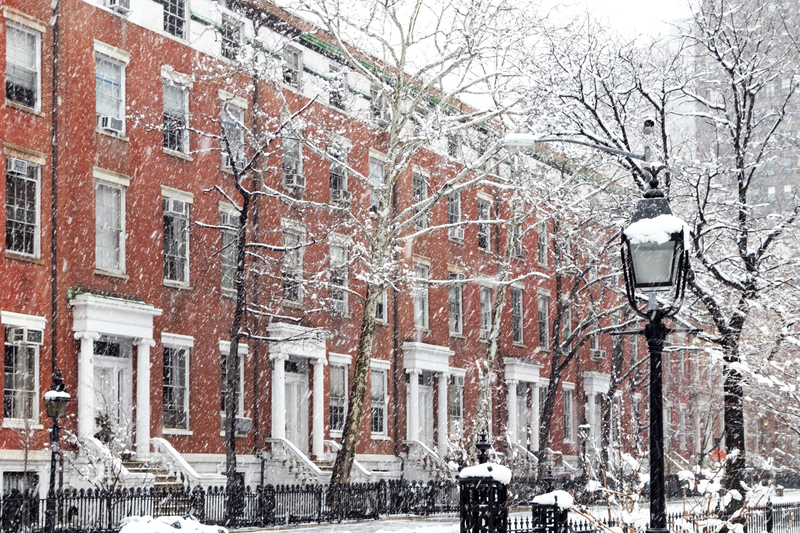Owning a few square meters in New York City is a wish for most of you (and for us). So when this property in NYC is a townhouse, these townhouses with incomparable cachet in the upscale neighborhoods of the city, we reach the cream of the crop, the top of the top. Buying a townhouse is certainly the best thing that can happen to you in New York and we tell you how to do it.
What you need to know before buying a townhouse in New York City
The basics
A townhouse is a private house where at least one wall is shared with another residence. Townhouses are quite rare in the New York real estate market and account for barely 2% of residential transactions. Yet real estate of this type is often superb and some of it is part of NYC’s real estate heritage and history. Historical details, gardens, privacy, numerous bedrooms and bathrooms … In an overcrowded city like New York where housing is often cramped, living in a townhouse is a luxury that you will soon not be able to live without.
Size matters!
Indeed, New York townhouses are described in terms of width and depth. In terms of width, townhouses range from 13 to 25 feet (3.9m to 7.62m), with most townhouses being built within a range of 17 to 20 feet (4.26m to 6m). They are as wide as the size of their lot, which means the size of the parcel of land on which the property is located. In terms of depth, the dimensions vary considerably and there is often an extension on one or more floors which makes the exact size difficult to determine with precision without the help of a professional. Many townhouses also have outdoor space, at the front and back of the house. In general, in most residential areas, the minimum backyard depth is at least 30 feet (9.1m).
As you can see, the larger the townhouse, the more valuable it is because the more air and light, the better the circulation between the rooms. Larger and shorter rooms are also easier to arrange than longer and narrow rooms.
Living in a townhouse
The owner of a townhouse in New York is responsible for paying all property taxes, upkeep and repairs to the property, unlike a co-op or a condominium, but no monthly payment is required for building management. There is no approval by the board of directors for the purchase or sale of such property. Also be aware that the sale of the property can be passed on to any third party without the prior approval of anyone other than the owner.
Tax rates are determined annually by the NYC Council based on the class of real estate. Class 1 includes one to three family homes and Class 2 includes all other residential properties. This rate is then applied to the assessed value of the properties which is estimated by the Department of Finance.
Neighborhoods to find a townhouse to buy in NYC
There are townhouses to buy in almost all areas of New York City, but some are remarkable, in terms of their geographic location and their prestige renovation. Thus, in the Upper West Side, the block between Central Park West and Columbus which historically recorded the most expensive sales in 1970. In the Upper East Side, it is near 5th Avenue, where the most expensive block is located between 70th and 71st East. In the Chelsea district, the most beautiful townhouses are found on 21st and 22nd streets West, between 10th and 11th avenue.
How much does a townhouse cost in NYC?
The price of a townhouse is determined by a host of variables, including building and lot size, location and condition. From one neighborhood to another, sometimes from one street to another, the price can fluctuate considerably. In addition, the immediate environment is very important and you have to look at the houses behind the townhouse, those on the sides and the one in front. The more expensive townhouses are on blocks with rows of townhouses on both sides of the street. Otherwise, there is a fire station, a police service or a school nearby or worse, opposite, prices will be lower because of noise and traffic. Finally, you should know that if the prices of townhouses in Manhattan generally start at several million dollars, they are often cheaper per square meter than apartments. And, unlike a co-op, there is no liquidity requirement imposed on the buyer after the close (other than those required by the lender).
